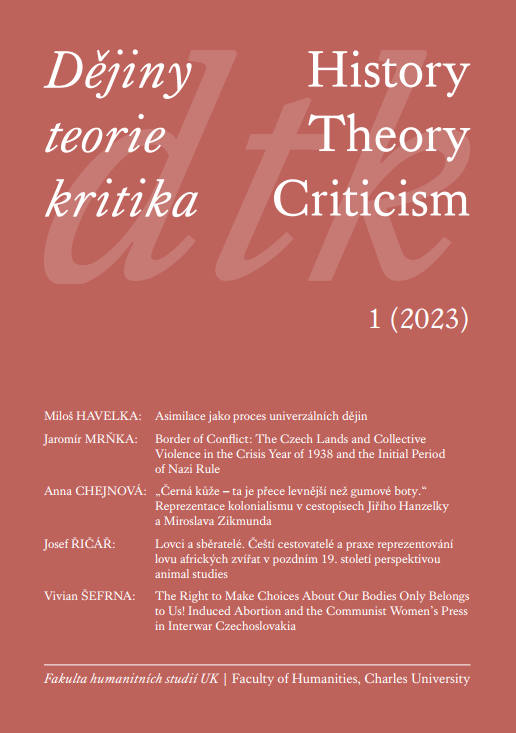Border of conflict: The Czech lands and collective violence in the crisis year of 1938 and the initial period of Nazi rule
DOI:
https://doi.org/10.14712/24645370.3057Keywords:
collective violence, crisis, Munich 1938, Nazi Occupation, Czechoslovakia, Protectorate Bohemia and MoraviaAbstract
The article introduces the Czechoslovak events of 1938 to 1939 with a broader analytical comparison. The author uses Charles Tilly's typology of collective violence to reveal the more general connection between the disruption of state power and the escalation of violence. He captures the general characteristics and constructs ideal types of violent interactions occurring in the observed period in the Czech lands. The analysis concludes that acts of collective violence from the spring of 1938 to the summer of 1939 appeared most often in the form that Tilly typologically refers to as broken negotiations and scattered attacks. Violent acts primarily correlated with periods of power instability. The work of violence specialists was crucial. It was coordinated by political leaders who mobilized the public against the alleged acute danger. At the same time, politicians were using rumors that spread very quickly in an atmosphere of uncertainty. Public leaders used collective violence as a tool of political struggle, gaining broad support for their political intentions.


